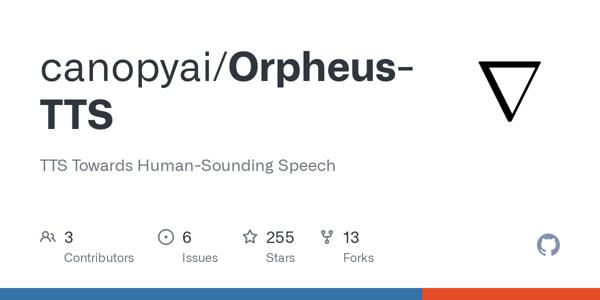Orpheus TTS
Orpheus TTS is an open-source Text-to-Speech (TTS) system based on Llama-3b. It aims to leverage the capabilities of Large Language Models (LLMs) for voice synthesis and features the following key characteristics:
- Human-like Voice: Capable of generating natural, expressive, and rhythmic voices that even surpass some closed-source leading models.
- Zero-shot Voice Cloning: Can clone voices without any pre-tuning.
- Emotion and Tone Control: Allows control over voice emotion and tone characteristics through simple tags.
- Low Latency: Features a streaming transmission delay of approximately 200 milliseconds, suitable for real-time applications, and can be further reduced to about 100 milliseconds with input streaming.
Orpheus TTS provides three models:
- Finetuned Prod (Fine-tuned Production Model): A model fine-tuned for everyday TTS applications.
- Pretrained (Pre-trained Model): A benchmark model trained on over 100,000 hours of English speech data.
Use Cases:
Due to its human-like voice and low-latency features, Orpheus TTS is suitable for the following use cases:
- Voice Assistants: Create more natural and expressive voice assistants.
- Real-time Voice Interaction: Use in applications requiring real-time voice interaction, such as games, virtual reality, and online education.
- Content Creation: Generate high-quality voice narration for videos, podcasts, etc.
- Assistive Technology: Provide text-reading services for visually impaired individuals or generate voices for those who need assistive communication.
- Personalized Voice Experience: Offer personalized voice experiences to users through voice cloning and emotion control features.
- AI Dubbing: Provide AI dubbing solutions.
In addition, Orpheus TTS also provides data processing scripts and example datasets, making it convenient for users to create their own fine-tuned models to meet specific needs.

